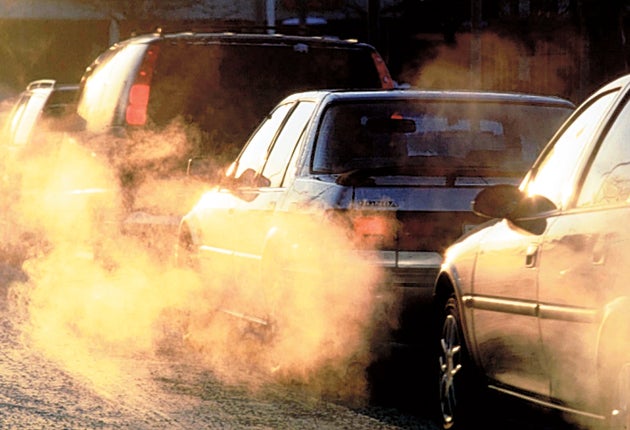Time to bite the dust: A new way to cut pollution is being tested in London
The capital is nearing the legal limit for the quantity of lung-clogging emissions in its atmosphere.

If you've done much running, cycling – even walking – around the capital, it is a problem with which you will be all too familiar: dust. It infuses the air like incense, leaving it hot, heavy, and uncomfortable to breathe. It comes from car emissions, tyre and brake wear, and it is one reason why London is nearing the European Union's legal limits on particulate matter (PM10).
Last November, in what was billed as a landmark pollution-reduction programme, the Mayor's office announced its intention to trial a new dust suppressant. Made from calcium magnesium acetate, it had already been trailed in Sweden, Norway, Austria, Italy and Germany. The practice sees the streets swept and washed, before a biodegradable saline solution is sprayed. The result is a surface which keeps dust stuck to it, so even once the particulate matter has been emitted, it doesn't circulate in the air. City Hall hopes that it will be successful in reducing PM10 levels by 10 to 20 per cent in the areas affected.
"Those are the sorts of results we saw on the Continent and that's the example we are following," explains a spokesman. "Our specialist vehicle has been brought in from Sweden and we fully expect it to work."
Not everyone is as confident. Professor Frank Kelly is Director of Kings College London's Environmental Research Group, and has been monitoring the progress of dust suppressant technology closely: "The European trials produced very mixed results. As a solution, it is unproven. In an experiment like this it is very important to understand all the issues. Air pollution varies day to day, so the six-month comparison period isn't really appropriate. There's been no information released on how they are going to conduct the comparison. And what benefits are produced are likely to be only temporary. You have to ask why they are doing this."
Certainly, one incentive is the likelihood of a European fine. At the moment the technique is limited to two of London's worst-affected areas: the Victoria Embankment, and the network of roads around King's Cross station. With these cleared up, London is far less likely to be penalised.
"The source of London's pollution is traffic," says Kelly. "If a long-term solution is to be found, that's what we need to look at." It is to this end that a further scheme to remove the city's oldest, most-polluting, taxis by 2012 has come into force. Similarly, London's first zero-emissions bus route should begin service later in the year, with the help of eight hydrogen-fuelled buses. For many, this is doesn't go nearly far enough; more radical action may be needed.
It's too early say what progress had been made with the calcium magnesium acetate; tests won't be conducted for a couple of months. If successful, the plans are to roll out the scheme. But with the trial costing £300,000, it won't be cheap.
Subscribe to Independent Premium to bookmark this article
Want to bookmark your favourite articles and stories to read or reference later? Start your Independent Premium subscription today.

Join our commenting forum
Join thought-provoking conversations, follow other Independent readers and see their replies